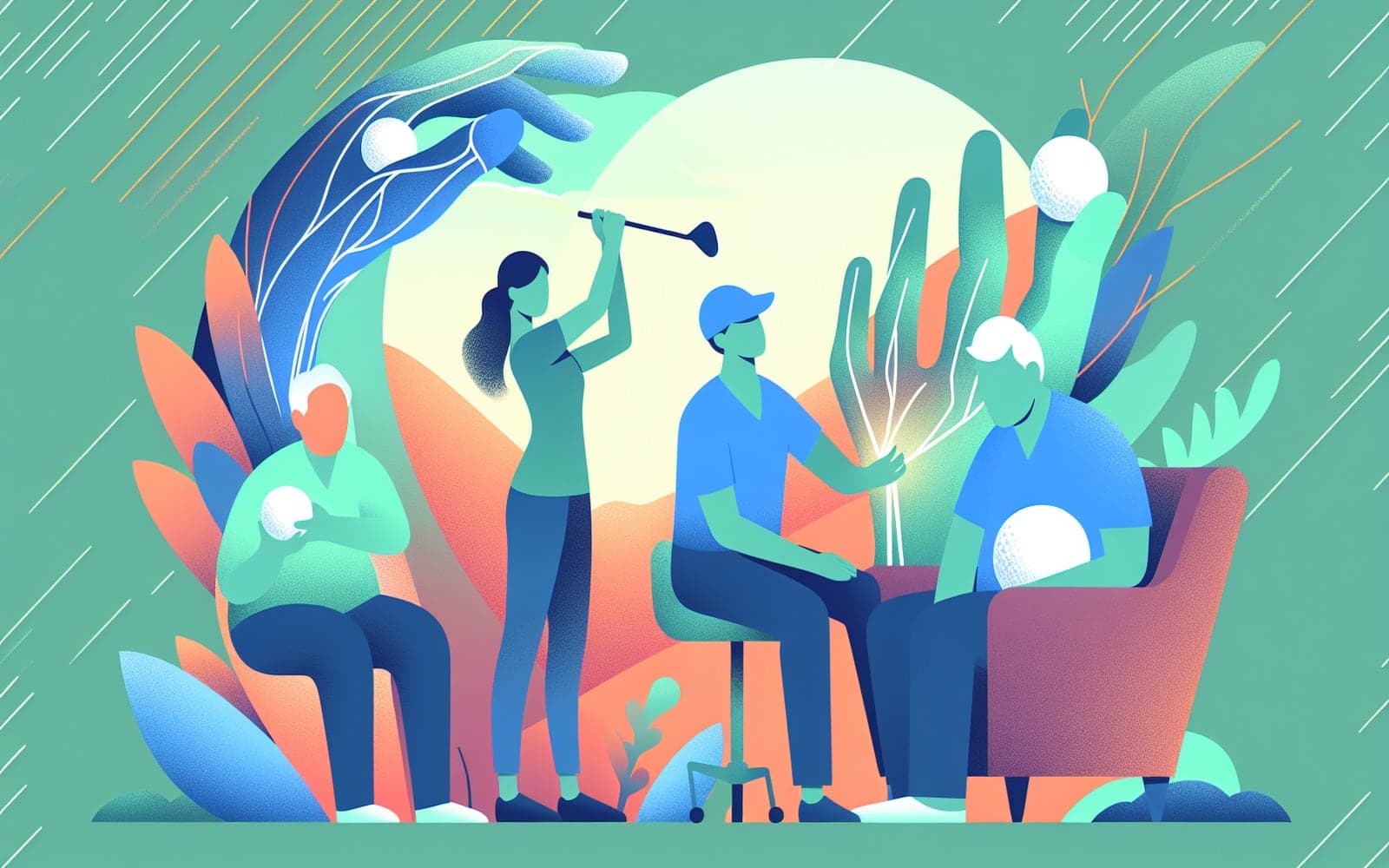Treating Golf Elbow: What Works and What Doesn't?
Published: Dec 20, 2023

Medically reviewed by Becky Powers | MD, The University of Texas Medical School - Houston, Texas on December 20th, 2023.
Golfer's elbow can be debilitating, but understanding treatment options can ease your pain. Discover effective therapies and avoid those that don't work.
Contents
Initial Treatment Strategies
Initial treatment for golfer's elbow involves activity modification and pain management. Reducing activities that trigger pain and using counterforce bracing can help. Pain relievers like NSAIDs may reduce discomfort, but should be used with caution.
Physical Therapy and Strengthening
Physical therapy is a cornerstone of treatment for golfer's elbow. Therapists often use exercises that strengthen the wrist and forearm muscles. Eccentric strengthening exercises, in particular, have shown effectiveness in improving symptoms.

Emerging Treatments
New therapies like platelet-rich plasma (PRP) injections and ultrasound-guided tenotomy are being explored. While promising, these treatments need more research to confirm their effectiveness. Patients should discuss all options with their healthcare provider before proceeding.
Frequently Asked Questions
The first step is modifying activities to reduce pain.
Physical therapy, especially eccentric exercises, is very effective.
PRP shows promise but requires more research.
NSAIDs can reduce pain but are not a cure.
Key Takeaways
Choosing the right treatment is crucial for managing golfer's elbow effectively.
Ready to explore treatment options for your elbow pain? Talk to Doctronic for guidance.Related Articles
References
Smidt N, Assendelft WJ, Arola H, et al. Effectiveness of physiotherapy for lateral epicondylitis: a systematic review. Ann Med 2003; 35:51.
Manias P, Stasinopoulos D. A controlled clinical pilot trial to study the effectiveness of ice as a supplement to the exercise programme for the management of lateral elbow tendinopathy. Br J Sports Med 2006; 40:81.
This article has been reviewed for accuracy by one of the licensed medical doctors working for Doctronic. Always discuss health information with your healthcare provider.

